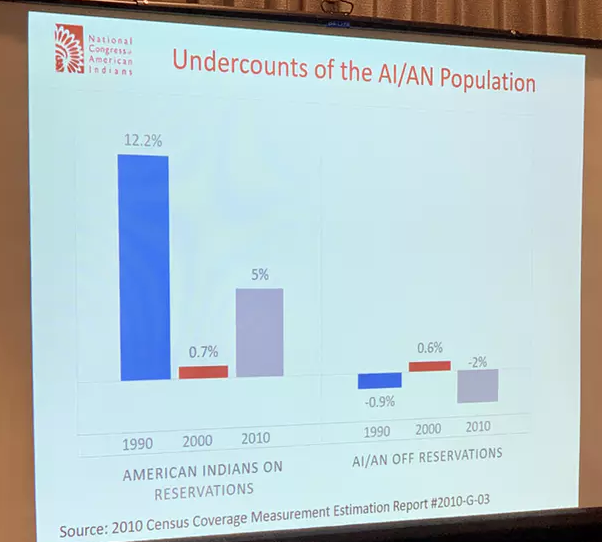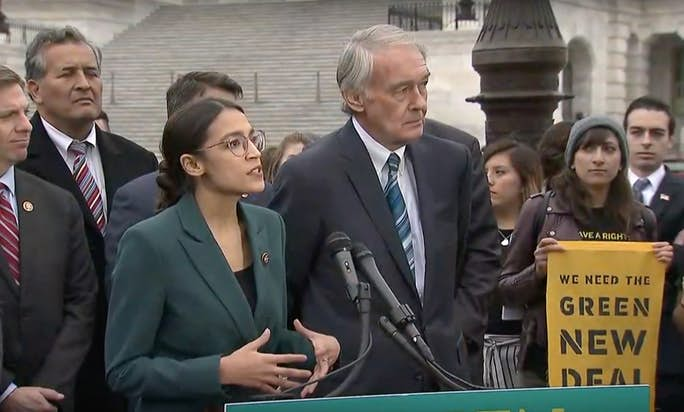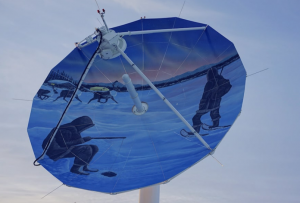Verizon throttled fire department’s “unlimited” data during Calif. wildfire
Fire dep’t had to pay twice as much to lift throttling during wildfire response.
Update: The Santa Clara fire department has responded to Verizon’s claim that the throttling was just a customer service error and “has nothing to do with net neutrality.” To the contrary, “Verizon’s throttling has everything to do with net neutrality,” a county official said.
Verizon Wireless’ throttling of a fire department that uses its data services has been submitted as evidence in a lawsuit that seeks to reinstate federal net neutrality rules.
“County Fire has experienced throttling by its ISP, Verizon,” Santa Clara County Fire Chief Anthony Bowden wrote in a declaration. “This throttling has had a significant impact on our ability to provide emergency services. Verizon imposed these limitations despite being informed that throttling was actively impeding County Fire’s ability to provide crisis-response and essential emergency services.”
Bowden’s declaration was submitted in an addendum to a brief filed by 22 state attorneys general, the District of Columbia, Santa Clara County, Santa Clara County Central Fire Protection District, and the California Public Utilities Commission. The government agencies are seeking to overturn the recent repeal of net neutrality rules in a lawsuit they filed against the Federal Communications Commission in the US Court of Appeals for the District of Columbia Circuit.
Throttling affected response to wildfire
“The Internet has become an essential tool in providing fire and emergency response, particularly for events like large fires which require the rapid deployment and organization of thousands of personnel and hundreds of fire engines, aircraft, and bulldozers,” Bowden wrote.
Santa Clara Fire paid Verizon for “unlimited” data but suffered from heavy throttling until the department paid Verizon more, according to Bowden’s declaration and emails between the fire department and Verizon that were submitted as evidence.
The throttling recently affected “OES 5262,” a fire department vehicle that is “deployed to large incidents as a command and control resource” and is used to “track, organize, and prioritize routing of resources from around the state and country to the sites where they are most needed,” Bowden wrote.
“OES 5262 also coordinates all local government resources deployed to the Mendocino Complex Fire,” an ongoing wildfire that is the largest in California’s history, Bowden wrote.
The vehicle has a device that uses a Verizon SIM card for Internet access.
“In the midst of our response to the Mendocino Complex Fire, County Fire discovered the data connection for OES 5262 was being throttled by Verizon, and data rates had been reduced to 1/200, or less, than the previous speeds,” Bowden wrote. “These reduced speeds severely interfered with the OES 5262’s ability to function effectively. My Information Technology staff communicated directly with Verizon via email about the throttling, requesting it be immediately lifted for public safety purposes.”
Verizon did not immediately restore full speeds to the device, however.
“Verizon representatives confirmed the throttling, but rather than restoring us to an essential data transfer speed, they indicated that County Fire would have to switch to a new data plan at more than twice the cost, and they would only remove throttling after we contacted the Department that handles billing and switched to the new data plan,” Bowden wrote.
Verizon “risking harm to public safety”
Because the throttling continued until the department was able to upgrade its subscription, “County Fire personnel were forced to use other agencies’ Internet Service Providers and their own personal devices to provide the necessary connectivity and data transfer capability required by OES 5262,” Bowden wrote.
Verizon throttling also affected the department in a response to previous fires in December and June, emails show.
Bowden argued that Verizon is likely to keep taking advantage of emergencies in order to push public safety agencies onto more expensive plans.
“In light of our experience, County Fire believes it is likely that Verizon will continue to use the exigent nature of public safety emergencies and catastrophic events to coerce public agencies into higher-cost plans, ultimately paying significantly more for mission-critical service—even if that means risking harm to public safety during negotiations,” Bowden wrote.
Update: In a statement to Ars three hours after this article was published, Verizon acknowledged that it shouldn’t have continued throttling the fire department’s data service after the department asked Verizon to lift the throttling restrictions.
“Regardless of the plan emergency responders choose, we have a practice to remove data speed restrictions when contacted in emergency situations,” Verizon’s statement said. “We have done that many times, including for emergency personnel responding to these tragic fires. In this situation, we should have lifted the speed restriction when our customer reached out to us. This was a customer support mistake. We are reviewing the situation and will fix any issues going forward.”
Verizon also noted that the fire department purchased a data service plan that is slowed down after a data usage threshold is reached. But Verizon said it “made a mistake” in communicating with the department about the terms of the plan.
“We made a mistake in how we communicated with our customer about the terms of its plan,” Verizon said. “Like all customers, fire departments choose service plans that are best for them. This customer purchased a government contract plan for a high-speed wireless data allotment at a set monthly cost. Under this plan, users get an unlimited amount of data but speeds are reduced when they exceed their allotment until the next billing cycle.”
Verizon also said that the Santa Clara “situation has nothing to do with net neutrality or the current proceeding in court.”
Throttling happened after net neutrality repeal
Verizon’s throttling was described in fire department emails beginning June 29 of this year, just weeks after the FCC’s repeal of net neutrality rules took effect.
Even when net neutrality rules were in place, all major carriers imposed some form of throttling on unlimited plans when customers used more than a certain amount of data. They argued that it was allowed under the rules’ exception for “reasonable network management.” But while such throttling is generally applied only during times of network congestion, the Santa Clara Fire Department says it was throttled at all times once the device in question went over a 25GB monthly threshold.
Even if Verizon’s throttling didn’t technically violate the no-throttling rule, Santa Clara could have complained to the FCC under the now-removed net neutrality system, which allowed Internet users to file complaints about any unjust or unreasonable prices and practices. FCC Chairman Ajit Pai’s decision to deregulate the broadband industry eliminated that complaint option and also limited consumers’ rights to sue Internet providers over unjust or unreasonable behavior.
Emails between fire department and Verizon
On June 29, Fire Captain Justin Stockman wrote an email to Verizon, noting that download speeds for an essential device used during large disasters had been throttled from 50Mbps to about 30kbps.
A Verizon government accounts manager named Silas Buss responded, saying that the fire department would have to move from a $37.99 plan to a $39.99 plan “to get the data speeds restored on this device.” Later, Buss suggested that the department switch to a plan that cost at least $99.99 a month.
Stockman didn’t have authority to upgrade the plan, so he sent an email to Deputy Chief Steve Prziborowski that same day. Stockman wrote:
Verizon is currently throttling OES 5262 so severely that it’s hampering operations for the assigned crew. This is not the first time we have had this issue. In December of 2017 while deployed to the Prado Mobilization Center supporting a series of large wildfires, we had the same device with the same SIM card also throttled. I was able to work through [Fire Department IT executive] Eric Prosser at the time to have service to the device restored, and Eric communicated that Verizon had properly re-categorized the device as truly “unlimited”.
Prziborowski expressed concern about the throttling in an email to Buss. “Before I give you my approval to do the $2.00 a month upgrade, the bigger question is why our public safety data usage is getting throttled down?” Prziborowski wrote. “Our understanding from Eric Prosser, our former Information Technology Officer, was that he had received approval from Verizon that public safety should never be gated down because of our critical infrastructure need for these devices.”
While fire department personnel thought they were already paying for “truly” unlimited data, Verizon said they weren’t.
“The short of it is, public safety customers have access to plans that do not have data throughput limitations,” Buss told Prziborowski. “However, the current plan set for all of SCCFD’s lines does have data throttling limitations. We will need to talk about making some plan changes to all lines or a selection of lines to address the data throttling limitation of the current plan.”
The emails started up again on July 5 and 6. “Can confirm that after using 25GB of data, our service drops to zero. This is unacceptable and needs to be fixed,” fire department IT officer Daniel Farrelly wrote.
Buss clarified that “data throughput is limited to 200kbps or 600kbps” after 25GB of use. Buss also told fire officials that all Verizon plans have some sort of throttling and that the department would have to pay by the gigabyte to avoid throttling entirely.
Buss wrote:
Verizon has always reserved the right to limit data throughput on unlimited plans. All unlimited data plans offered by Verizon have some sort of data throttling built-in, including the $39.99 plan. Verizon does offer plans with no data throughput limitations; these plans require that the customer pay by the GB for use beyond a certain set allotment.
The Mendocino fire began on July 27. On the night of Sunday, July 29, Stockman sent an email to Bowden:
OES 5262 is deployed again, now to the Mendocino Complex, and is still experiencing the same throttling. As I understood it from our previous exchange regarding this device, the billing cycle was set to end July 23, which should have alleviated the throttling. In a side-by-side comparison, a crew member’s personal phone using Verizon was seeing speeds of 20Mbps/7Mbps. The department Verizon device is experiencing speeds of 0.2Mbps/0.6Mbps, meaning it has no meaningful functionality.
Farrelly wrote a brief email to Buss that night, telling him to “Remove any data throttling on OES5262 effective immediately.” Farrelly emailed Buss again the next morning, saying, “Please work with us. All we need is a plan that does not offer throttling or caps of any kind.”
Buss responded that afternoon, suggesting a plan that costs $99.99 for the first 20GB and $8 per gigabyte thereafter. “To get the plan changed immediately, I would suggest calling in the plan change to our customer service team,” Buss wrote.
That was the last email submitted in the court exhibit.
Santa Clara apparently switched to the $99.99 plan, more than doubling its bill. “While Verizon ultimately did lift the throttling, it was only after County Fire subscribed to a new, more expensive plan,” Bowden wrote in his declaration.





Comments are closed here.